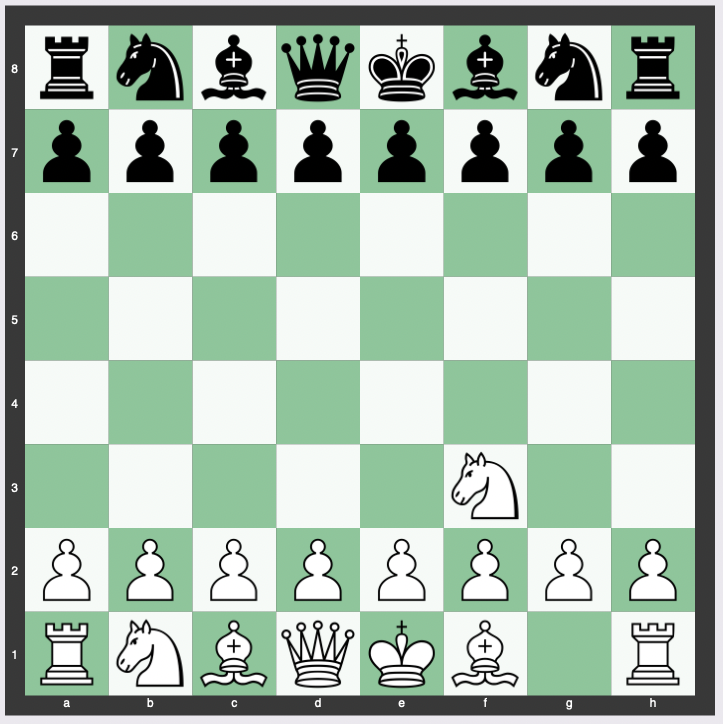One common question that arises among chess enthusiasts is whether it is permissible to jump over or capture one’s own pieces.
Can You Jump Your Own Pieces in Chess?
In chess, only the knight can jump over its own pieces as well as opponent’s pieces.
Below we look deeper at the topic surrounding this topic, providing valuable insights and clarifications for chess players of all levels.
Can You Jump Over Your Own Pieces?
In chess, whether or not a piece can jump over other pieces depends on the type of piece:
Pawns
Cannot jump over other pieces.
They move forward one square but capture diagonally. On their first move, they have the option to move forward two squares, but they still cannot jump over other pieces.
Rooks
Cannot jump over other pieces.
They move horizontally or vertically any number of squares.
Bishops
Cannot jump over other pieces.
They move diagonally any number of squares.
Queens
Cannot jump over other pieces.
They combine the power of a rook and a bishop, meaning they can move horizontally, vertically, or diagonally any number of squares.
Kings
Cannot jump over other pieces.
They move one square in any direction.
Knights
Can jump over other pieces. They have a unique movement pattern: they move two squares in one direction (horizontally or vertically) and then one square perpendicular to that, or vice versa. This forms an “L” shape.
Knights can jump over pawns starting with the first move.

So, to answer your question directly: Only knights can jump over their own pieces (or opponent’s pieces) in chess.
FAQs – Can You Jump Your Own Pieces in Chess?
What pieces in chess can jump over other pieces?
Only the knight can jump over other pieces in chess.
It has a unique movement pattern that allows it to leap over both friendly and enemy pieces.
Can pawns jump over other pieces in chess?
No, pawns cannot jump over other pieces in chess.
They move forward one square but capture diagonally.
On their first move, they have the option to move forward two squares, but they still cannot jump over other pieces.
How does the knight’s movement differ from other chess pieces?
The knight’s movement is unique among all chess pieces.
It moves in an “L” shape: two squares in one direction (horizontally or vertically) followed by one square in a perpendicular direction, or vice versa.
This allows the knight to jump over other pieces on the board, making its movement distinct from all other pieces.
Are there any special rules for jumping pieces in chess?
The only piece that can jump over others is the knight, and there are no special rules for its jumping ability.
It simply follows its unique “L” shaped movement pattern. No other piece in traditional chess has the ability to jump over other pieces.
Can a queen jump over other pieces in chess?
No, the queen cannot jump over other pieces.
It can move horizontally, vertically, or diagonally any number of squares, but it must have a clear path to do so.
How does the bishop move in relation to other pieces on the board?
The bishop moves diagonally any number of squares. It is limited to squares of the same color as its starting square for the entire game.
Like most other pieces, the bishop cannot jump over other pieces and must have a clear path for its movement.
Are there any chess variants where pieces can jump over others?
Yes, there are many chess variants with different rules and pieces.
Some variants might allow certain pieces to jump over others or introduce new pieces with jumping abilities.
For example, in Chinese chess (Xiangqi), the cannon captures by jumping over another piece.
Why can only the knight jump over pieces in traditional chess?
The knight’s unique ability to jump over pieces is a part of the game’s historical design and adds complexity and depth to the game.
The knight’s movement is a remnant from earlier versions of the game where its movement was thought to represent the way cavalry could maneuver through infantry formations on a battlefield.
Can a king jump over its own pieces during castling?
While castling might appear as if the king is jumping over the rook, it’s a unique move where the king and rook move simultaneously.
The king moves two squares towards the rook, and then the rook moves to the square next to the king.
For castling to be legal, there must be no pieces between the king and rook, and neither piece can have moved previously in the game.
How does the ability to jump affect the knight’s strategic value in chess?
The knight’s ability to jump over other pieces gives it a unique strategic value.
It can threaten pieces that might seem safe behind a line of pawns or other pieces.
This makes the knight especially valuable in closed positions where other pieces might be blocked.
Additionally, its unpredictable movement can create threats that are harder for the opponent to foresee, making it a valuable tool for tactics and forks.
Summary – Can You Jump Your Own Pieces in Chess?
The rules of chess do not allow players to jump over or capture their own pieces.
This rule applies to all pieces on the board and is essential for maintaining the strategic integrity of the game.
While there are a few exceptions, such as en passant and promotion, these are specific situations that do not violate the general rule.
By prohibiting self-captures, chess forces players to think strategically and plan their moves carefully.
It adds an extra layer of complexity to the game, as players must consider the consequences of each action and find alternative ways to achieve their objectives.


